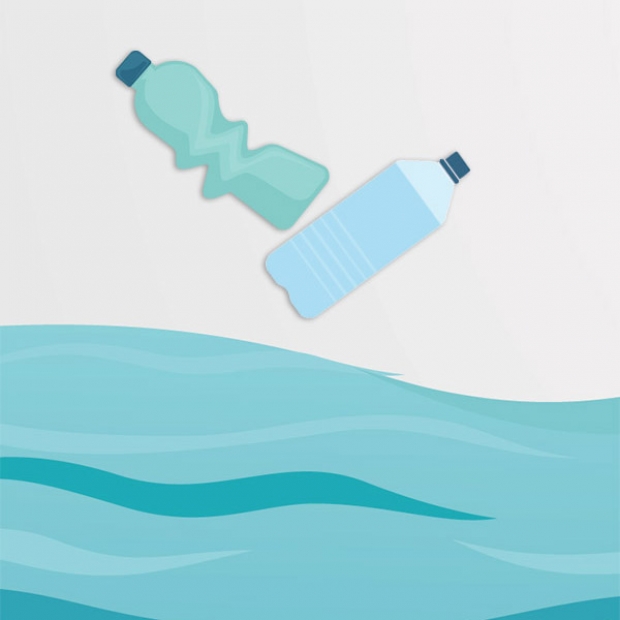What’s so bad about it and what can we do?

Plastics are one of the worst substances for the environment because they take a very long time (hundreds to thousands of years) to break down, and even then they never fully disintegrate. Adding to the problem, plastics have become ubiquitous in our society; you can find them in your computers, your furniture and even some of your clothes.
Single-use plastics, plastics that we use one time and throw away, account for approximately 40–60 percent of the plastics we use. A typical person uses between 350 and 700 plastic bags in one year, and last year the average American used 167 disposable water bottles but only recycled 38.
Even recycling plastic doesn’t do as much good as you might think. Unlike glass and metal, which can be infinitely recycled, plastics can only be recycled so many times. You may have noticed numbers on the bottom of your plastics; these indicate the type of plastic used. Each time plastic is recycled, it is “downgraded” until it can no longer be recycled, which means it eventually ends up in a landfill (or worse, the ocean).
Speaking of the ocean, it is estimated that 10 percent of our plastics end up there. Ocean currents carry debris to gyres where they stay, presumably, forever. You may have heard of the “Great Pacific Garbage Patch,” a collection of plastic roughly twice the size of Texas located in the Pacific Ocean. This poses a problem to many marine animals, and each year hundreds of thousands of sea turtles, whales and other marine mammals (and more than one million seabirds) die from ocean pollution. When we eat seafood, ocean plastic and the toxins it carries can end up in our own bodies.
Luckily, there are steps we can take to reduce the amount of plastics in the ocean. The most effective and simplest solution is to quit using single-use plastics. It’s so easy and cost-effective to buy a reusable bottle (preferably glass or metal) and refill it. You can find these bottles in most stores for about the cost of a 24-pack of water. You may be surprised to learn that tap water is actually more regulated than bottled water. Up to 25 percent of bottled water actually comes from municipality sources, and bottlers aren’t even required to list their source on the label.
Reusable bags are just as easy to find and use. Many stores sell these bags for a very reasonable price (usually $1–$2), and some even offer a discount to patrons who have reusable bags. For example, Target offers 5 cents off for each reusable bag used. If you want to be extra thrifty, you can make your own reusable bag from an old T-shirt (Google it!).
Another easy way to avoid plastics is to look at the packaging of the items you’re purchasing. When possible, opt for items with less packaging. Paper, glass or metal packaging is even better! Shopping in bulk also helps reduce plastic waste. You can even write to your favorite brands asking for more sustainable packing options.
- One million+ seabirds die from ocean pollution each year
- 10% of our plastics end up in the ocean
- 40-60% of the plastics we use are single-use plastics
- Each year hundreds of thousands of sea turtles, whales and other marine mammals die from ocean pollution
Follow Kelly on twitter (@TheGreen Strand) or check out her blog—www.thegreenstrandblog.wordpress.com—to learn more about being eco-friendly on the Grand Strand.